Abstract
Based on data from 2022, the national harvest volume for garlic, a representative leafy vegetable crop in Japanese agriculture, was 20.4kt, the cultivated area was 2.55kha, and Aomori had the highest shipping volume at 9.3kt. These figures show that garlic production is thriving throughout Japan, with Aomori being a major shipping area. Furthermore, when we look at the ratio of cultivated area to harvest yield, we can see that a relatively efficient production system is in place. Garlic is a traditional food ingredient in Japan, and demand for it is stable, with production volumes also appearing to be maintained at a stable level. Further increases in production are expected to continue in the future due to increasing demand and technological innovation.
Garlic harvest yield (main data).
Garlic harvest volumes in Japan have changed between 2002 and 2022. At its peak in 2020, the national harvest was recorded at 21.2kt, the highest in the past 20 years. However, it has declined somewhat in the following years and is currently at 96.2% of its peak level. This trend shows that garlic production has a certain periodicity, tending to increase towards the peak, but then decreasing after the peak. This may be due to factors such as demand, production conditions and climate change. Additionally, the high harvest yields at peak times also show that garlic is one of Japan’s important leafy stem vegetables. In the future, changes in demand and the adoption of sustainable production methods will likely influence whether production levels can be stabilised or increased.
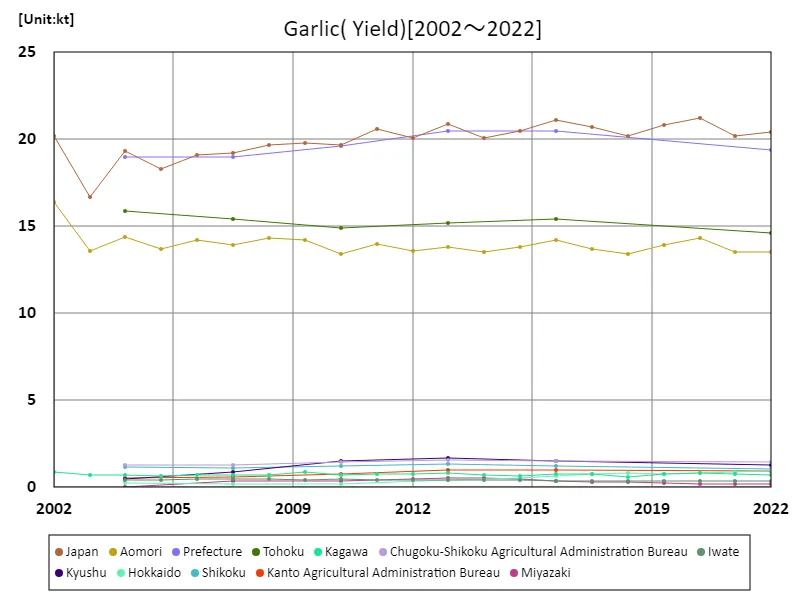

The maximum is 21.2kt[2020] of Japan, and the current value is about 96.2%
Garlic harvest volume (by prefecture).
The 2022 leafy vegetable harvest in Japan has been recorded by prefecture, with the highest overall being Aomori at 13.5kt, which is the current maximum. Looking at past trends, it stands out that Aomori ranks first in terms of harvest volume. It is believed that Aomori’s climate and soil conditions are suitable for growing leafy vegetable crops, which is why high yields are maintained. Leafy vegetables are also produced in other prefectures, and it is clear that the characteristics and varieties vary from region to region. Furthermore, data from 2022 suggests that leafy vegetable yields across Japan will remain relatively stable. This may be due to a balance between supply and demand, or improvements in agricultural technology that have improved production efficiency. In the future, adopting production methods that make use of the characteristics of each region and responding flexibly to changes in demand will be important factors for the sustainable production and supply of leafy vegetable crops.
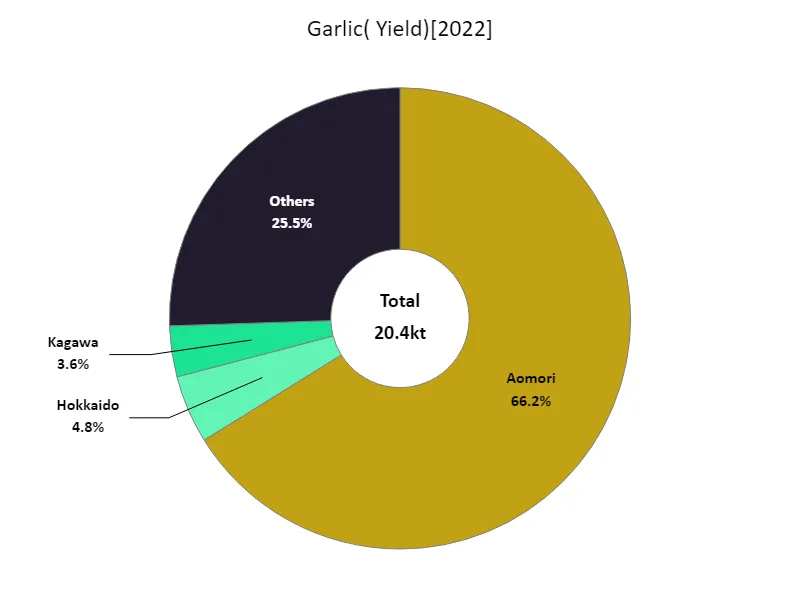

The maximum is 13.5kt of Aomori, the average is 434t, and the total is 20.4kt
Area cultivated with garlic (main data).
Based on data from 2002, the maximum area of land cultivated with garlic in Japanese agriculture was 2.55 kha, which is currently the maximum value. Considering past trends, garlic acreage appears to be relatively stable. Garlic is a traditional Japanese food ingredient, and this is likely due to stable demand. Another feature is that garlic cultivation techniques are widely shared among farmers, making production efficient. Furthermore, garlic is cultivated all over Japan, with distinctive varieties being grown in each region. These factors combine to contribute to garlic acreage remaining relatively stable. Although there may be fluctuations in the area cultivated in the future due to factors such as changes in demand and weather conditions, it is clear that garlic occupies an important position in Japanese agriculture.
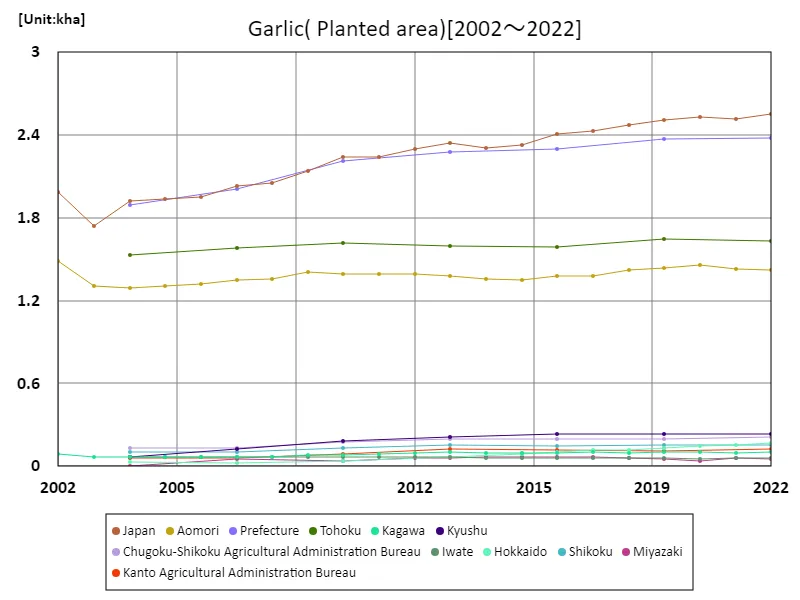

The maximum is the latest one, 2.55kha of Japan
Garlic cultivation area (by prefecture).
The area planted with leafy vegetables in Japan in 2022 has been recorded by prefecture, with the largest overall being Aomori at 1.42kha, which is the current maximum. This data shows that Aomori is a national leader in the cultivation of leafy vegetables. Aomori’s climate and soil conditions are suitable for growing leafy vegetable crops, so it is believed that the area cultivated there is larger than in other prefectures. In addition, the area of land used for cultivating leafy vegetables varies from region to region, with each region cultivating distinctive varieties. Considering past trends, it appears that the area planted to leafy vegetables is relatively stable, and the balance between supply and demand is relatively good. Productivity may also be increasing due to advances in agricultural technology and the spread of sustainable cultivation methods. In the future, adopting production methods that take advantage of the characteristics of each region and responding flexibly to changes in demand will be important factors for the sustainable production and supply of leafy vegetable crops.
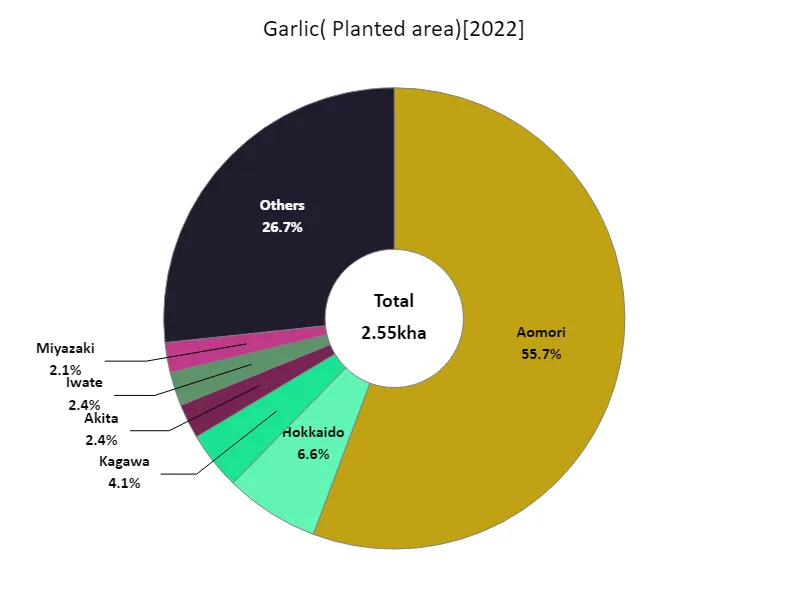

The maximum is 1.42kha of Aomori, the average is 54.2ha, and the total is 2.55kha
Garlic shipment volume.
In 2022, the largest garlic shipment volume in Japan was from Aomori at 9.3kt, with an average of 298t and a total of 14kt. Looking at past trends, it is clear that Aomori is a major shipping area for garlic nationwide. Aomori’s climate and soil conditions are ideal for growing garlic, which leads to high shipping volumes. Additionally, the total shipping volume of 14kt indicates that garlic occupies an important position in Japanese agriculture. Garlic is a traditional Japanese food ingredient, and this is likely due to stable demand. Another factor is that garlic cultivation techniques are widely shared among farmers and producers, allowing for efficient production. Although there is a possibility that shipping volumes will fluctuate in the future due to factors such as changes in demand and climate conditions, this suggests that garlic is an important crop in Japanese agriculture that can be expected to have a stable supply.
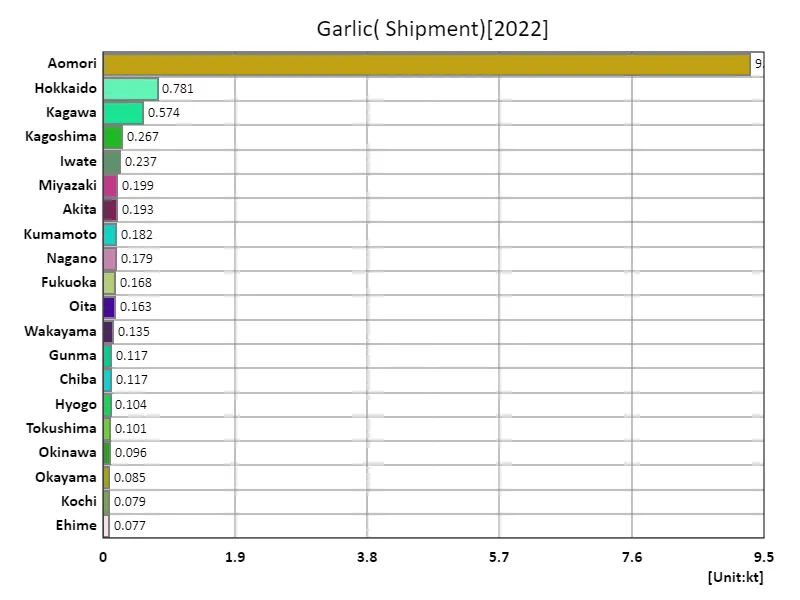

The maximum is 9.3kt of Aomori, the average is 298t, and the total is 14kt
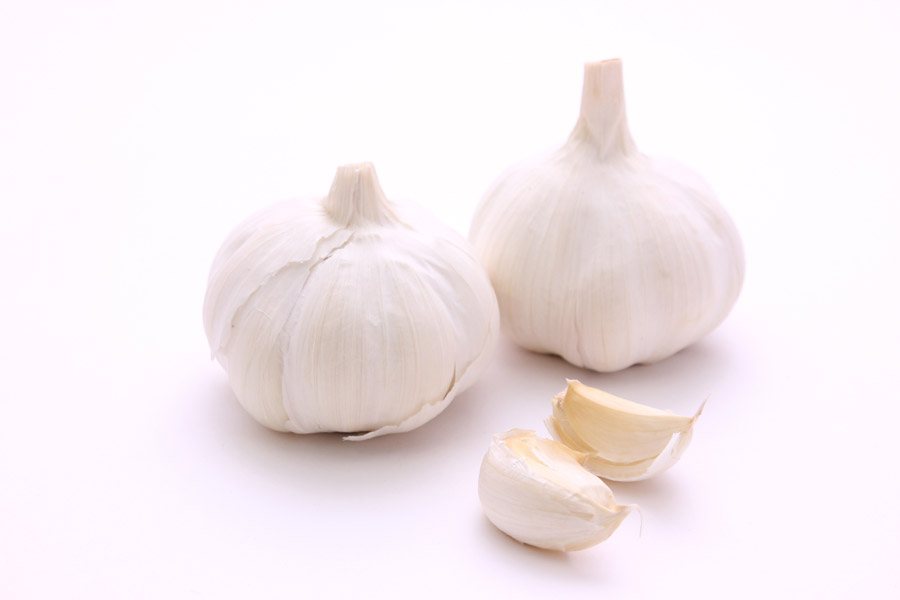


Comments